When is cutlery not cutlery? When it’s a fork or a spoon. Nick Duggan was impressed that the majority of his audience knew that only something that cuts can be defined as cutlery. But then we are a Sheffield-based club, after all, and our membership includes three former Masters Cutler.
Even my Oxford English Reference Dictionary gets it wrong: “Cutlery / kɅtlərI / n. knives, forks and spoons for use at table,” they say.
Nick is an expert on all things made in Sheffield, and two days later would be leading us on a tour of the Hawley Tool Collection, of which he is curator (see Visits). But for this talk he was concentrating on his own collection of Sheffield-made cutlery, flatware and hollowware.
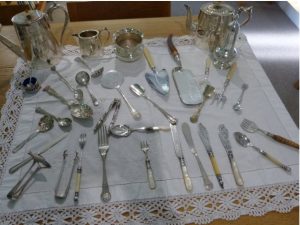
Nick’s quest for the best examples moved up a notch when he retired and had a business idea of putting Sheffield cutlery into frames, with a history of the maker. “This proved quite popular, and I started to search for cutlery in antique markets and on eBay,” he explained.
“The latter is pretty staggering – search ‘Sheffield cutlery’ and you get over 1,000 items at any time, search ‘vintage cutlery’ and it’s over 3,000.
“I started to realise the vast range of items made by a huge number of Sheffield cutlers. Over 1,000 companies are documented in Geoffrey Tweedale’s directory [Sheffield Tool Manufacturers 1740-2018] and some individual manufacturers had product ranges of over 5,000 items. The Walker & Hall trade catalogue alone has over 300 different cruet sets.”
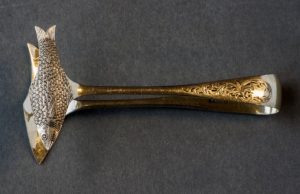
So, no shortage of objects to look out for. Nick’s personal favourite item was the sardine tongs made by Henry Wilkinson, like sugar tongs but with ‘blades’ in the shape of the fish. Nick showed us lots of other items for eating fish – he wondered how they kept it fresh in the days before fridges – such as large servers for whole trout or salmon, and highly decorated fish knives and forks perhaps used only on Friday.
A lot of these pieces would have been for the higher end of the market. “It’s amazing that some of the specialist items were only used when the fruit or vegetable was in season, such as asparagus tongs or strawberry forks.”
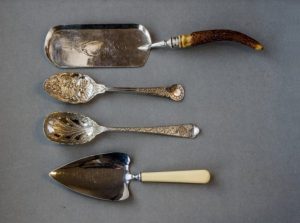
Nick showed us three-pronged forks to serve bread and five-pronged forks for fish and sardines. Oyster forks, with the maker’s mark Allen & Darwin, would have been used in a well-to-do household, as would the champagne syphon and a gigot for holding a leg of lamb.
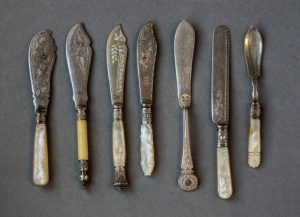
Among the more unusual items was a knife that was over 300 years old.
The Victorians loved sugar, and sugar sifters, and we saw a sugar scuttle that would have had a prominent place on the table.
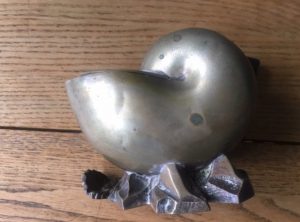
But nobody guessed Nick’s last mystery object, which was a shell shaped spoon warmer.
The earliest mention of cutlery manufacture in Sheffield was 1297, and in its heyday there were more than 1,650 firms. Silver plate (EPNS) was invented in 1841 and the scale of the industry was such that by 1851 there were 12,000 people employed, making it the largest group of cutlers in the world. Peak production and export was reached between 1890 and 1914.
